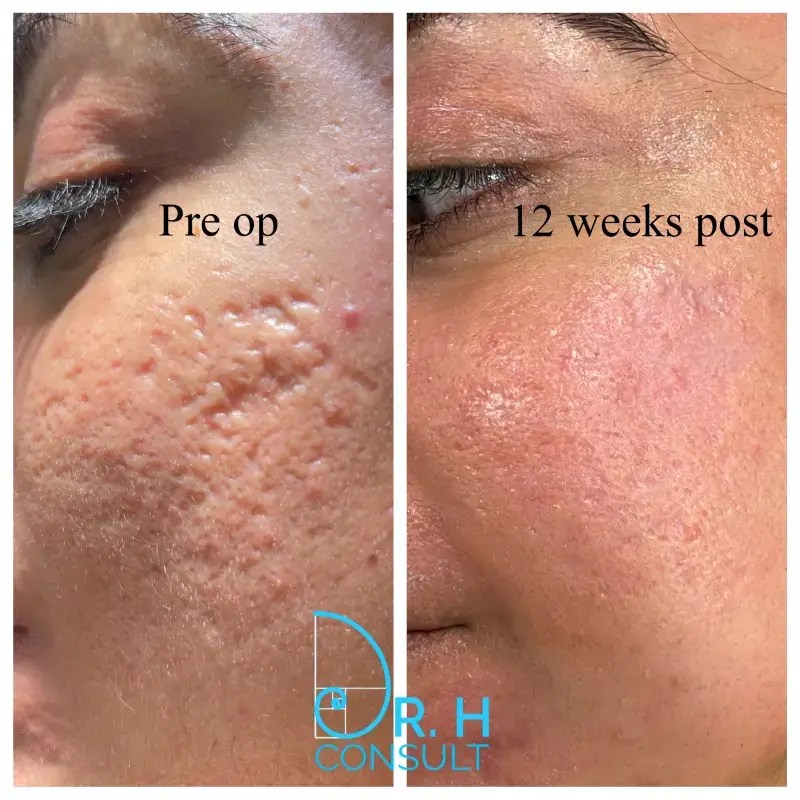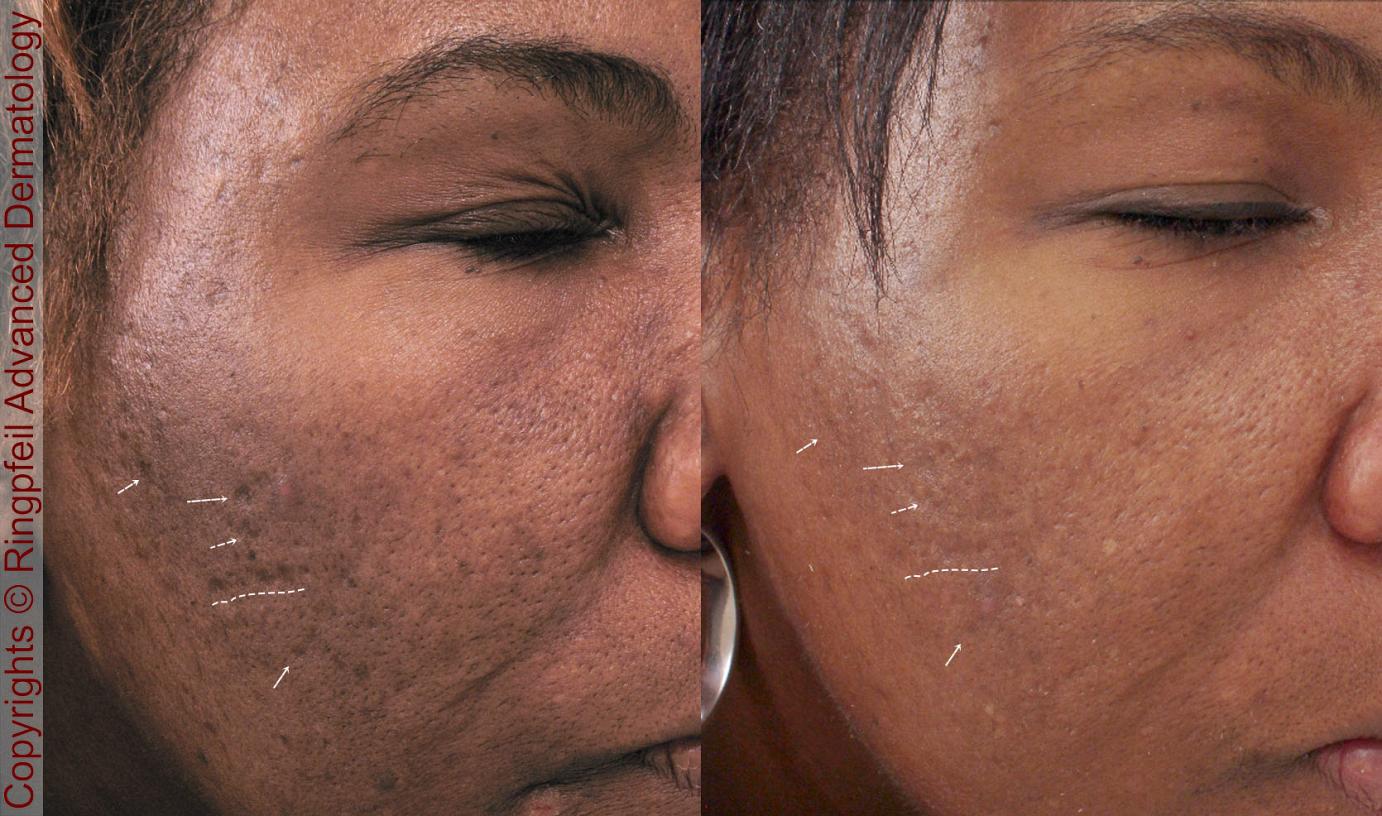Just How to Treat Acne Scars: Proven Approaches for a Remarkable Skin tone
Just How to Treat Acne Scars: Proven Approaches for a Remarkable Skin tone
Blog Article
Comprehending the Numerous Skin Disease and Effective Therapy Alternatives for Acne Scars
Acne marks stand for a complicated interaction of skin disease that substantially effect people' self-worth and general skin health and wellness. Comprehending the unique types of acne marks-- atrophic and hypertrophic-- along with their underlying reasons, is essential for establishing reliable therapy methods. Numerous restorative alternatives exist, ranging from advanced skin-related procedures to natural solutions. The efficiency of these therapies commonly pivots on individualized analyses by certified specialists. As we explore the landscape of acne scar monitoring, it becomes noticeable that the journey towards more clear skin might include more than simply topical remedies.
Kinds Of Acne Scars

On the other hand, hypertrophic marks arise from an overproduction of collagen throughout the healing process, leading to elevated locations on the skin. These marks are often strong and can vary in shade, often appearing red or darker than the bordering skin.
Recognizing these sorts of acne marks is important for creating an effective therapy plan - acne scars. Choices may consist of chemical peels, laser treatment, microneedling, or facial fillers, customized to the certain scar type. A thorough consultation with a dermatologist can assist determine the most suitable treatment, taking into account the person's skin type, scar severity, and overall skin health
Reasons For Acne Scarring
Scarring takes place as a result of the body's natural healing response to inflammation and injury brought on by acne lesions. When acne kinds, it causes an inflammatory action, resulting in the release of numerous cytokines and growth factors that promote healing. This procedure can sometimes lead to too much tissue development or insufficient repair, resulting in marks.
The main causes of acne scarring include the intensity of the acne itself, duration of the lesions, and specific skin kinds. Severe inflammatory acne, such as nodules and cysts, is most likely to lead to scarring due to much deeper cells damage. Furthermore, inappropriate handling of acne sores, such as pressing or selecting, can intensify tissue injury and swelling, raising the probability of scarring.
Genetic predisposition additionally plays a considerable duty; individuals with a family members history of scarring go to a higher threat. Additionally, skin kind and color can influence mark formation, as darker complexion might experience post-inflammatory hyperpigmentation, while lighter skin might develop atrophic marks.
Eventually, recognizing these causes is vital in managing acne and reducing the possibility for scarring.

Treatment Options for Scarring
Effective therapy options for acne scarring differ depending upon the kind and extent of the marks. Generally classified right into atrophic, hypertrophic, and keloid scars, these problems need tailored techniques for optimum results.
For atrophic marks, which are defined by a loss of cells, therapies such as chemical peels, microdermabrasion, and laser therapy are frequently used. These methods advertise skin revival and stimulate collagen manufacturing, thus improving skin texture. Subcision, a minimally invasive treatment, can likewise work by breaking up fibrous bands underneath the skin.
Keloid and hypertrophic marks can be more challenging to treat. Options consist of corticosteroid injections to minimize inflammation and squash the marks. In many cases, cryotherapy or laser therapy might be suggested to minimize their appearance.
Surgical choices are available for extreme scarring, where excision or Get More Information skin grafting may be necessary. It's vital for people to consult with a dermatologist to examine their particular mark kind and talk about the most suitable therapy strategy. Integrating multiple treatments usually yields the very best end results, making certain that each person's unique skin problem is dealt with efficiently.
Home Treatments and Natural Solutions
All-natural options and home remedies can supply an available strategy for people seeking to boost the look of acne scars (skin rejuvenation treatments). Numerous ingredients located in the home cooking area have shown prospective benefits in boosting skin texture and advertising recovery

An additional efficient option is lemon juice, which acts as an all-natural exfoliant and can lighten hyperpigmentation. However, it should be made use of meticulously, as it might cause photosensitivity. Oatmeal masks are additionally valuable; their gentle exfoliation can assist remove dead skin cells while comforting irritability.
Crucial oils, such as tea tree oil and lavender oil, can better support scar healing because of their antimicrobial residential properties. It is important to carry out a patch examination prior to using any type of solution to make certain there are no negative reactions. These natural services can be a complementary strategy in the trip to diminish acne scars.
Protecting Against Future Scarring
Embracing an aggressive approach to skincare can considerably lower the threat of creating future acne marks. Routine cleaning, peeling, and hydration can aid maintain skin wellness and prevent clogged pores.
In addition, preventing the lure to choose or squeeze acne lesions is vital, as this can cause inflammation and subsequent scarring. Rather, people must focus on applying topical therapies that advertise recovery and decrease swelling. Components such as salicylic acid, benzoyl peroxide, and retinoids are known for their efficiency in managing acne and reducing scars.
Sunlight protection is an additional important part; direct exposure to UV rays can hamper and darken marks healing. Utilizing a broad-spectrum sun block daily can minimize these results.
Finally, preserving a healthy and balanced diet regimen abundant in anti-oxidants and staying moisturized assistances skin regrowth. By carrying out these preventative measures, individuals can significantly decrease their danger of future scarring and advertise general skin health and wellness.
Final Thought
In final thought, a detailed understanding of acne marks, encompassing both atrophic and hypertrophic kinds, is important for reliable treatment methods. Assessment with a right here skin doctor remains necessary to devise individualized approaches that take into consideration specific skin types and mark seriousness, ultimately improving the efficiency of mark management methods.
Acne marks stand for a complicated interplay of skin problems that substantially influence individuals' self-worth and overall skin wellness. The two primary next categories of acne scars are atrophic and hypertrophic scars. These scars are more identified into 3 subtypes: ice pick marks, which are narrow and deep; boxcar marks, which are broader and have distinct edges; and rolling scars, which create a wave-like look due to unequal skin structure.
A detailed consultation with a skin doctor can aid identify the most appropriate treatment, taking right into account the individual's skin kind, scar intensity, and total skin health and wellness.
Assessment with a skin doctor stays essential to design individualized methods that consider individual skin kinds and scar intensity, eventually improving the efficacy of scar monitoring strategies.
Report this page